

Photo Description I have read many accounts of how these farmers fought this foe for most of their lives. That still didn't prepare me for the persevering purslane I planted. In an earlier post, I mentioned how all the red purslane in the picture above came from one small stem I planted two years ago. Actually, it was about fifteen months ago. What's more, cuttings from this one piece are planted in a double row of sunken gutters, each just five inches wide and four inches deep. It is crowding out my grass. I'm pulling it all up. Three or four plants will fill a bushel basket! I'm throwing it in the driveway, from there, on to the compost pile. I haven't been feeling well, lately, so, these plants have been lying in my driveway for a week. These on my shaded compost pile have been there almost that long. They all continue to open and close every day at their appointed times. Their clocks and light sensors are still going strong. That is perseverance! A wonderful perseverance! The will to survive is truly the strongest force in the Universe.
Purslane, a type of portulaca, was the scourge of the 17th, 18th, and 19th century European gardener. They detested it so, they gave it names like 'Pusley' and Hogweed, no doubt they fattened many a hog on this stuff.

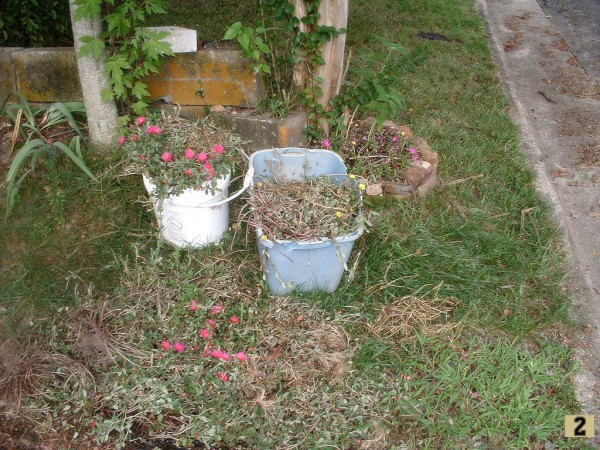
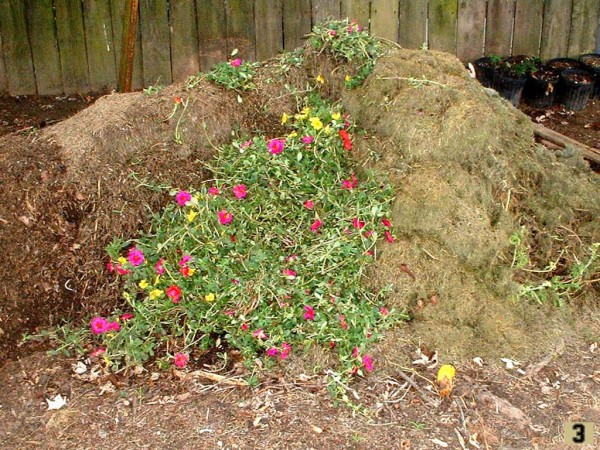
Add your voice! Click below to comment. ThriftyFun is powered by your wisdom!
Cars slow down or stop. The drivers take long looks. Passersby stop, look and scratch their heads, then smile and walk on.
I pondered; rather than transport this proliferating display of plucked purslane to the compost pile, perhaps for the present, I'll leave it in place, as it appears to be providing people a small portion of passing, but piquant, pleasure.
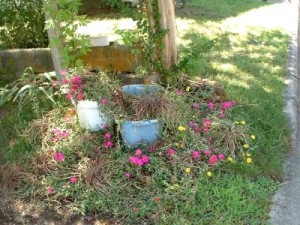
The plant that European gardeners considered as invading and with no ornemental value is Portulaca oleacera or Portulaca sativa. The leaves can be eaten in salads and it is, today, used in phytotherapy. Portulaca oleacera has insignificant tiny yellow flowers. The Portulaca you are showing with the beautiful flowers is a different plant, it is Portulaca grandiflora.
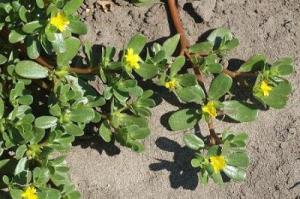
Catherine
I didn't say which purslane was troublesome to European gardeners, just purslane. I think what I'm guilty of here is not matching my text to my pictures. Mea Culpa. My point was to show how rapidly purslane in general, proliferates and I happened to have a mass of proliferating purslane of a particular type.
The taxonomists really need to get together on naming all the portulaca varieties, strains, cultivars, etc. Wikipedia lists Portulaca grandiflora as Moss Rose and I agree. It has cylindrical leaves. I'm certain it is P. pilosa. Unless I am mistaken, it is only the double flowering, prostate variety that should be called grandiflora. Also P.grandiflora is edible. I've eaten lots of it. I admit, it is not as tasty as P.oleracea sativa.
I am quite familiar with P.oleracea sativa. I grow it every year. The one I grow is also known as Golden Purslane.
As far as the pictured portulaca being inedible, I beg to differ. I eat it every day and think it tastes the best of all the portulacas. I mentioned this in an earlier post about purslanes.
So, what is pictured is not P. grandiflora and it is edible. To be perfectly honest with you, I do not know which portulaca is pictured. It very closely resembles, but is not identical to, the Australian P.umbraticola.
I can ask an expert, but with taxonomists being experts and disagreeing amongst themselves, it would be of little use.
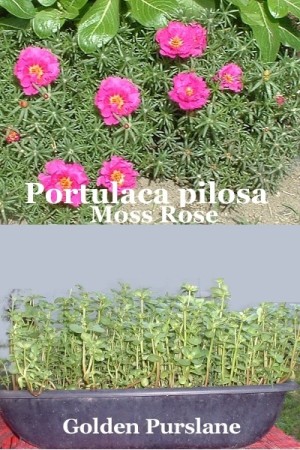
It is just that, I thought that european gardeners could seem a bit stupid throwing away such beautiful flowers or giving them to pigs. I thought that you could not be writing about the same plant and believe that you got the period of times the wrong way round. Portulaca oleacera (oleacera, latin adjective for orchard plant, vegetable) was purposely grown in Europe through the 17th, 18th, and 19th for human consumption and for the medecinal uses of its seeds. At the time there were not yet many vegetables that could be easily grown and that provided vitamin C.
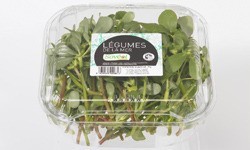
My, we have opened a can of worms. The taxonomists have left us out in the cold on this one.
This is what I believe. Please correct me if you think I'm wrong. I believe the portulaca the Europeans fought as a weed was P. oleracea. This particular portulaca was wild, small leaved,and ground hugging. I have a bit of it growing wild on my property.
Also, I'm wondering if the portulaca grown as food by the Europeans might have been P. oleracea sativa, a sub species of P. oleracea, and the one I grow and have pictured here as 'Golden Purslane'. The name P.oleracea sativa as applied to 'Golden Purslane is from J L Hudson, one of the most respected seedsman in the U.S.
Back to my 'beautiful flowers'. Upon closer examination, I now believe they are the Australian P. umbraticola. I can't post the picture here. I don't own it. But, here is a link to a picture of P. umbraticola. I believe it to be the same as what I'm growing. Tell me what you think.
Add your voice! Click below to comment. ThriftyFun is powered by your wisdom!